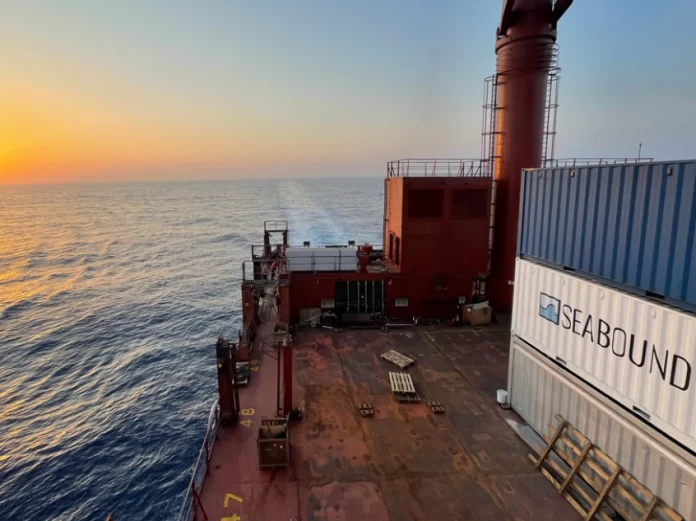Seabound, a pioneering company based in the United Kingdom specializing in carbon capture solutions tailored for the shipping sector, has achieved a significant milestone by successfully trialling its innovative carbon capture technology on a commercial container ship.
“Our pilot project demonstrates that we can capture carbon emissions directly onboard ships simply and cost-effectively,” stated Alisha Fredriksson, CEO and Co-Founder of Seabound.
In collaboration with the global shipping firm Lomar and its corporate venture lab, lomarlabs, Seabound conducted a pilot program showcasing its groundbreaking system. This system utilizes cutting-edge second-generation carbon capture technology known as calcium looping.
Before testing, Seabound’s system received approval for onboard implementation from the American Bureau of Shipping (ABS), supplemented by a thorough risk assessment conducted by Lloyd’s Register. Notably, this inventive system boasts the capability of capturing up to 95% of CO2 emissions from a vessel’s exhaust, transforming them into solid calcium carbonate pebbles that can be conveniently offloaded at port for reuse or commercialization.
“Seabound’s technology presents an attractive and viable solution to reducing carbon emission, with a technology that is simple to install, operate and maintain,” commented Stylianos Papageorgiou, managing director of lomarlabs.
To facilitate this groundbreaking endeavour, Seabound and Lomar secured US$1.5 million in grant funding from the UK Government through the Clean Maritime Demonstration Competition Round 3, aiding in financing the pilot program.
The project utilized a 240-meter-long container ship with a capacity exceeding 3,200 containers as a practical testing ground. This vessel, chartered by Hapag-Lloyd, a leading liner shipping company globally, also provided support for the project.
Furthermore, the trial effectively captured approximately 1 tonne of CO2 per day utilizing the prototype system. These tests underscore the feasibility of Seabound’s innovative technology within the shipping industry and set the stage for potential larger-scale deployments in the future.
In addition, the installation of Seabound’s system was completed at a shipyard in Turkey, with the Seabound team embarking on a two-month voyage aboard the vessel to acquire hands-on operational insights. A series of tests conducted onboard the ship demonstrated an escalating carbon capture rate over time, culminating in a remarkable carbon capture efficiency of 78% and sulfur capture efficiency exceeding 90%.
“Supporting this project by Seabound and Lomar underpins our dedication to reducing our climate impact. Our company’s ambitious aim is to be net zero by 2045. Thus, we are looking forward to the opportunities this foresighted project will bring in the future,” commented Georg Eljardt, senior director of Fleet Innovation & Technology.







